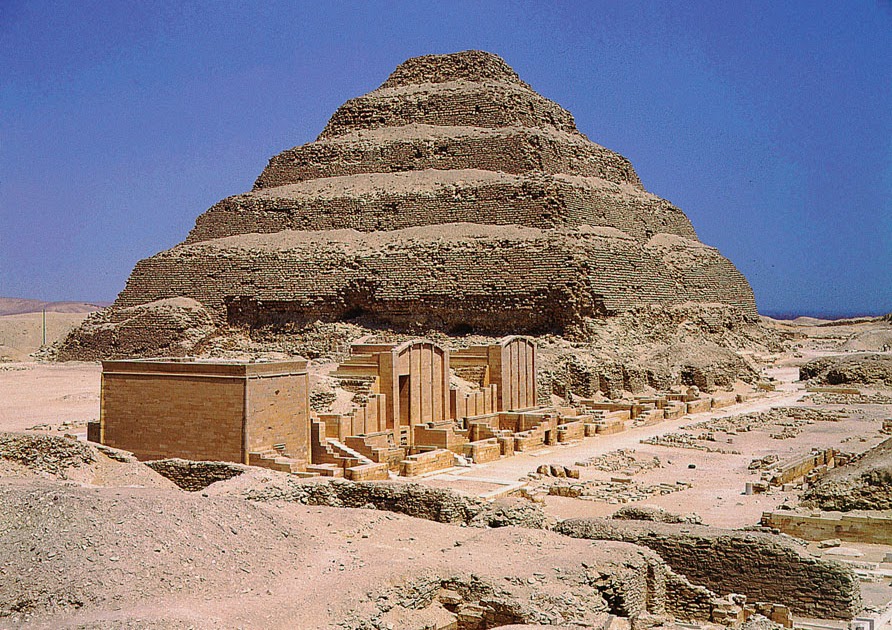The Pyramid of Djoser is not just an architectural marvel; it represents a significant milestone in the history of ancient Egypt. This step pyramid, constructed during the Third Dynasty of the Old Kingdom, is a testament to the ingenuity and ambition of its architect, Imhotep. As recent archaeological discoveries continue to shed light on this ancient structure, the Pyramid of Djoser remains a focal point of interest for historians, archaeologists, and enthusiasts alike.
In this article, we will explore the latest news surrounding the Pyramid of Djoser, its historical significance, architectural features, and ongoing preservation efforts. We aim to provide a comprehensive understanding of why this ancient structure is not only a tourist attraction but also a vital part of our world's heritage.
Join us on this journey as we delve into the fascinating world of the Pyramid of Djoser, uncovering the secrets of ancient Egypt and what makes this site a UNESCO World Heritage Site. From its construction to its current state, we will cover everything you need to know about this iconic pyramid.
Table of Contents
- Historical Significance of the Pyramid of Djoser
- Architectural Features
- Recent Archaeological Discoveries
- Preservation Efforts
- Visiting the Pyramid of Djoser
- Biodata of Djoser
- Conclusion
Historical Significance of the Pyramid of Djoser
The Pyramid of Djoser, also known as the Step Pyramid, was built as a tomb for Pharaoh Djoser around 2670 BCE. It is the earliest colossal stone building in Egypt and marks the transition from mastaba tombs to true pyramids. The pyramid's construction is attributed to the genius architect Imhotep, who is considered one of the first engineers in history.
This pyramid not only served as a burial site but also as a symbol of Djoser’s power and divine status. Its innovative design laid the groundwork for subsequent pyramids, influencing the architectural landscape of ancient Egypt.
The Transition from Mastaba to Pyramid
Before the construction of the Pyramid of Djoser, Egyptian royalty were typically buried in flat-roofed rectangular structures known as mastabas. Djoser's step pyramid represented a significant advancement in tomb architecture, showcasing a pyramid shaped structure that would evolve into the smooth-sided pyramids seen in later dynasties.
Architectural Features
The Pyramid of Djoser stands approximately 62 meters (203 feet) tall and consists of six stacked mastabas, creating its distinctive step-like appearance. The pyramid is surrounded by a complex that includes a mortuary temple, courtyards, and a vast burial ground.
Materials and Construction Techniques
- Constructed primarily of limestone, the pyramid’s core was made using rough stones.
- Imhotep's innovative use of columns and archways was revolutionary for its time.
- The pyramid was originally encased in Tura limestone, which gave it a brilliant white appearance.
Recent Archaeological Discoveries
In recent years, archaeologists have made significant discoveries around the Pyramid of Djoser, providing deeper insights into its construction and the life of ancient Egyptians. Excavations have revealed numerous artifacts, including pottery, tools, and inscriptions that date back to the era of Djoser.
One of the most exciting finds includes a series of underground tunnels that are believed to connect various burial sites within the pyramid complex. These tunnels may have been used for ceremonial purposes or to transport goods to the afterlife.
Preservation Efforts
Preserving the Pyramid of Djoser is crucial for maintaining its structural integrity and historical value. The Egyptian government, along with international organizations, has initiated several preservation projects aimed at restoring and protecting this ancient monument.
Efforts include:
- Regular maintenance to address erosion and structural damage.
- Monitoring environmental conditions that may affect the pyramid.
- Public awareness campaigns to educate visitors about the importance of preservation.
Visiting the Pyramid of Djoser
For those interested in exploring the Pyramid of Djoser, it is located in Saqqara, approximately 30 kilometers southwest of Cairo. Visitors can access the site and learn about its history through guided tours.
When planning a visit, consider the following:
- Best time to visit: October to April, when the weather is cooler.
- Entry fees and guided tour options are available at the site.
- Respect the site by following rules and regulations to preserve its integrity.
Biodata of Djoser
| Name | Djoser |
|---|---|
| Dynasty | Third Dynasty |
| Reign | c. 2670 – c. 2640 BCE |
| Father | Netjerikhet |
| Mother | Unknown |
Conclusion
In conclusion, the Pyramid of Djoser stands as a monumental achievement in ancient Egyptian architecture, embodying the cultural and spiritual significance of the era. As ongoing research and preservation efforts continue, this iconic structure not only attracts tourists but also serves as a vital link to our shared human history.
We invite you to share your thoughts in the comments section below, and don't forget to explore more articles on our site to learn about other fascinating historical sites.
Penutup
Thank you for joining us on this exploration of the Pyramid of Djoser. We hope you found this article informative and inspiring. Be sure to visit us again for more updates and insights into the wonders of ancient history.




